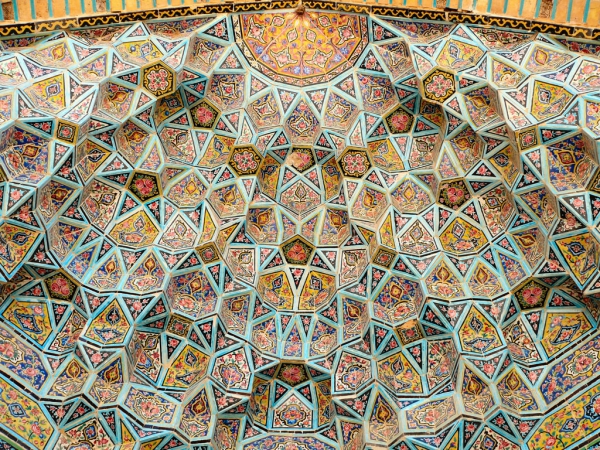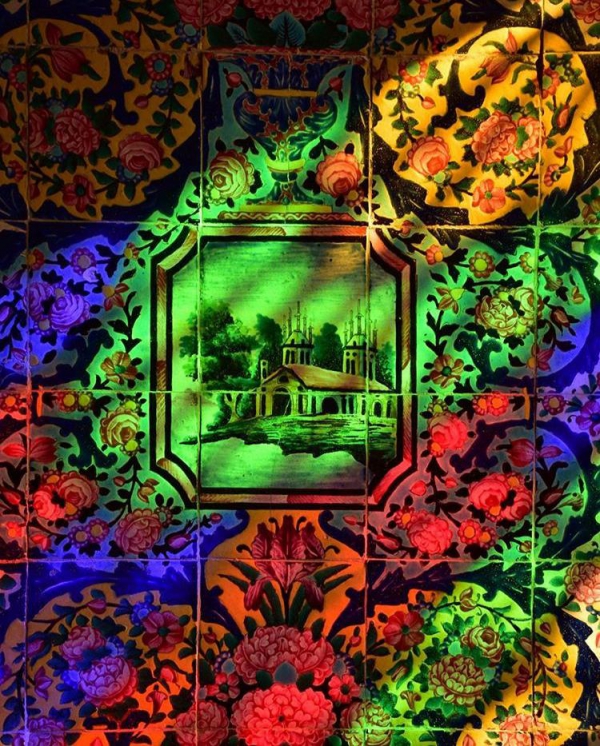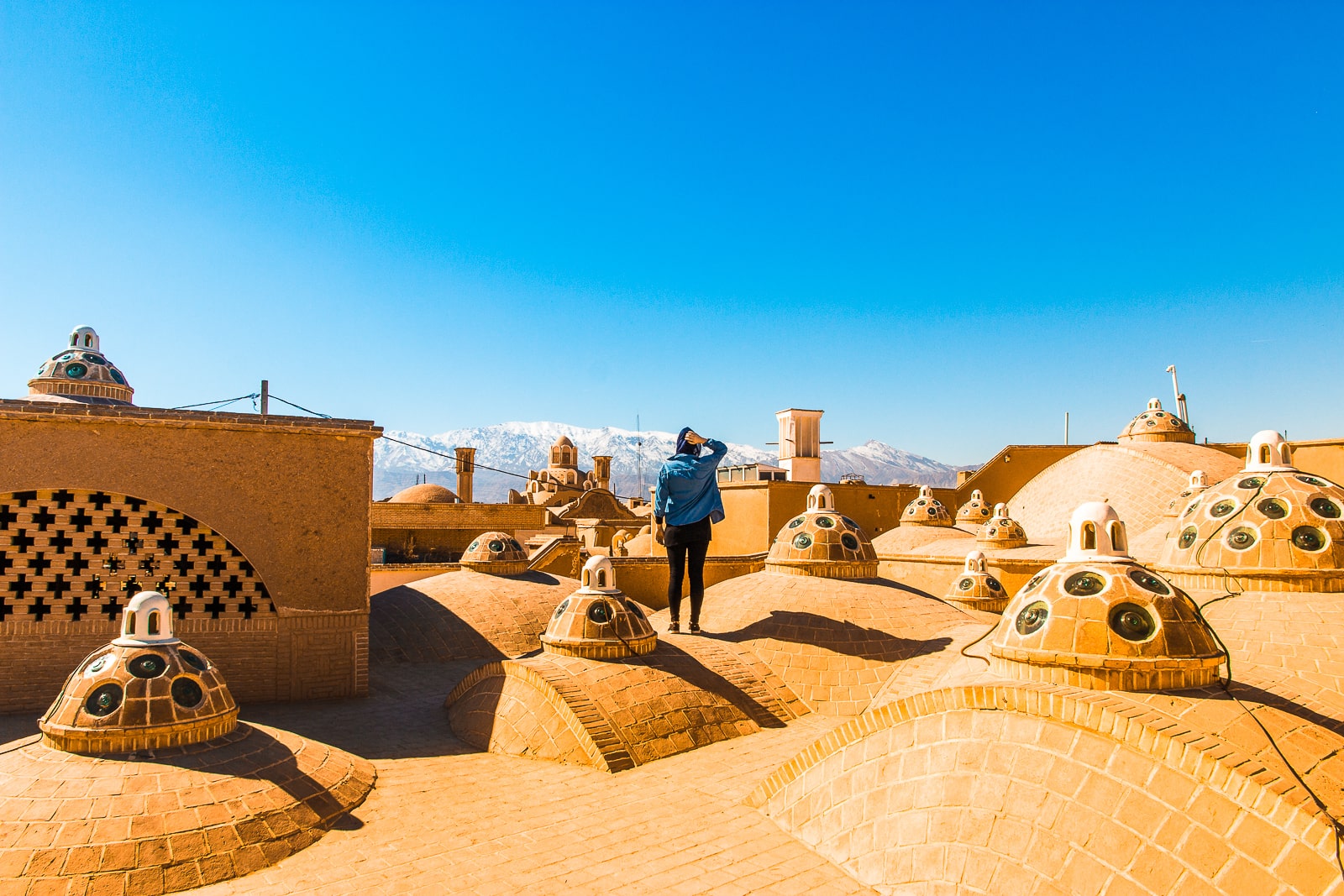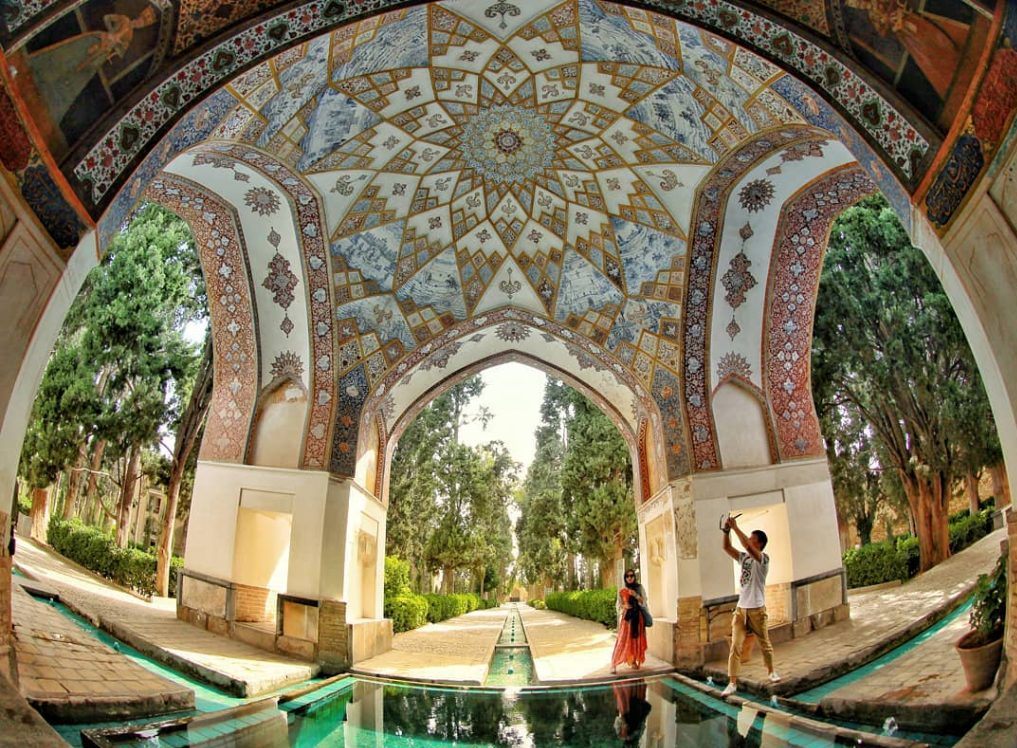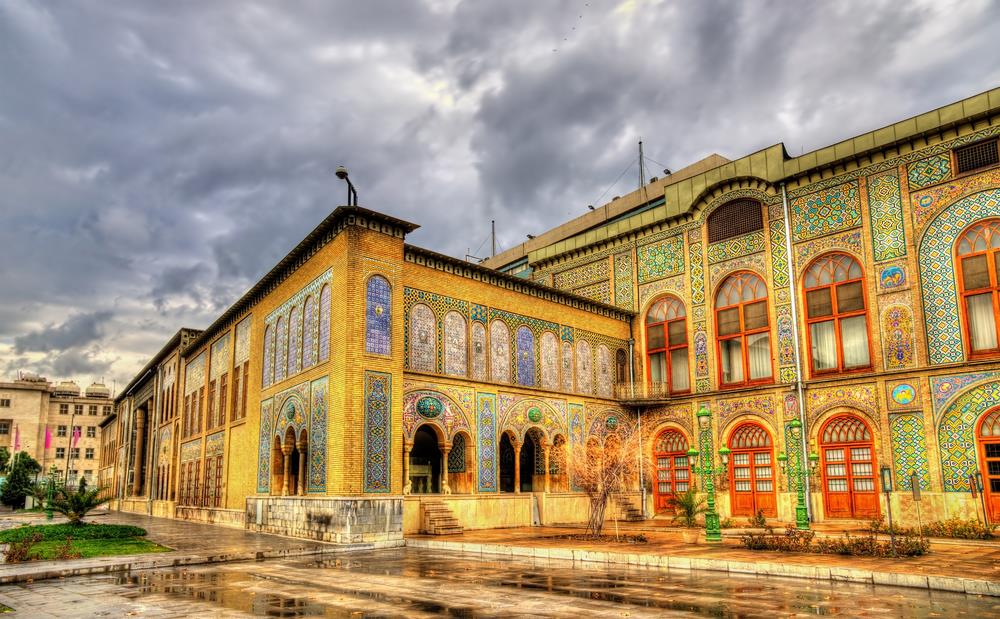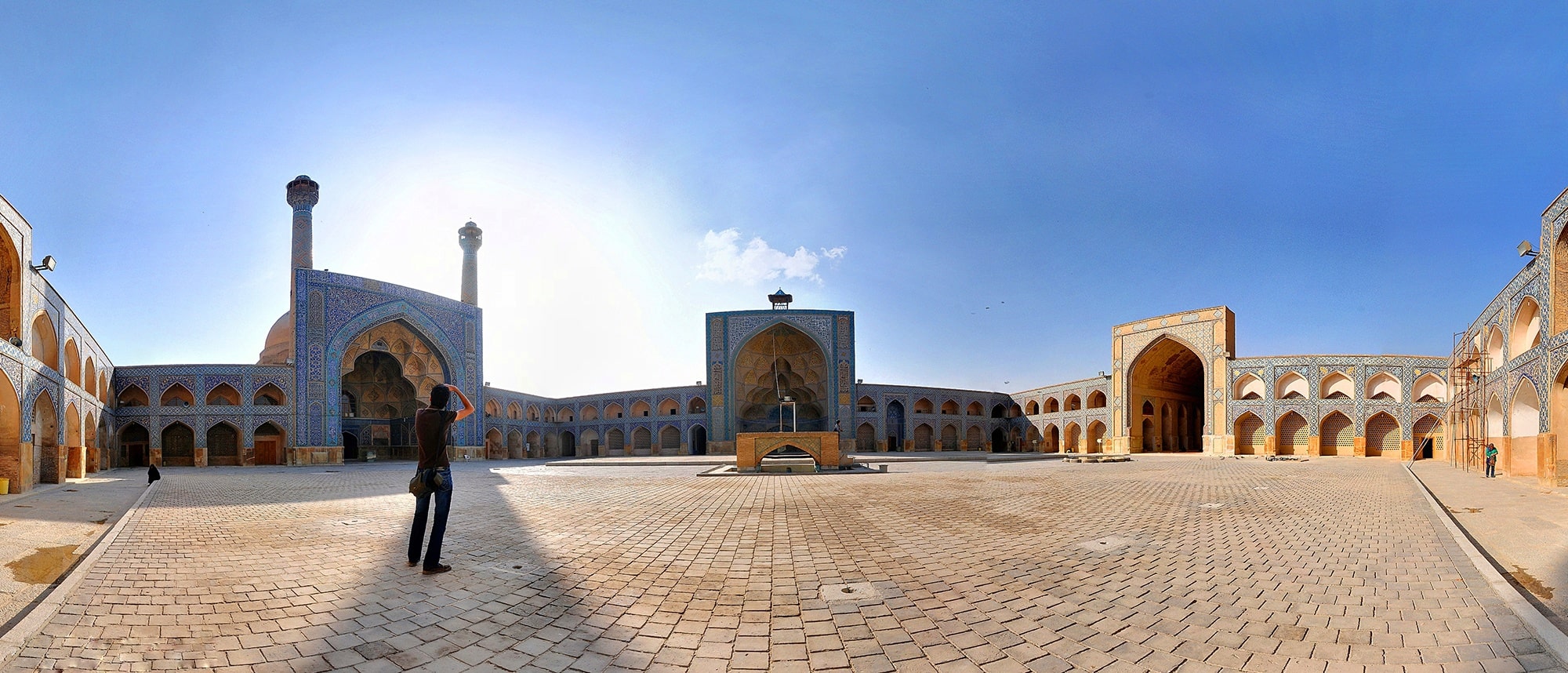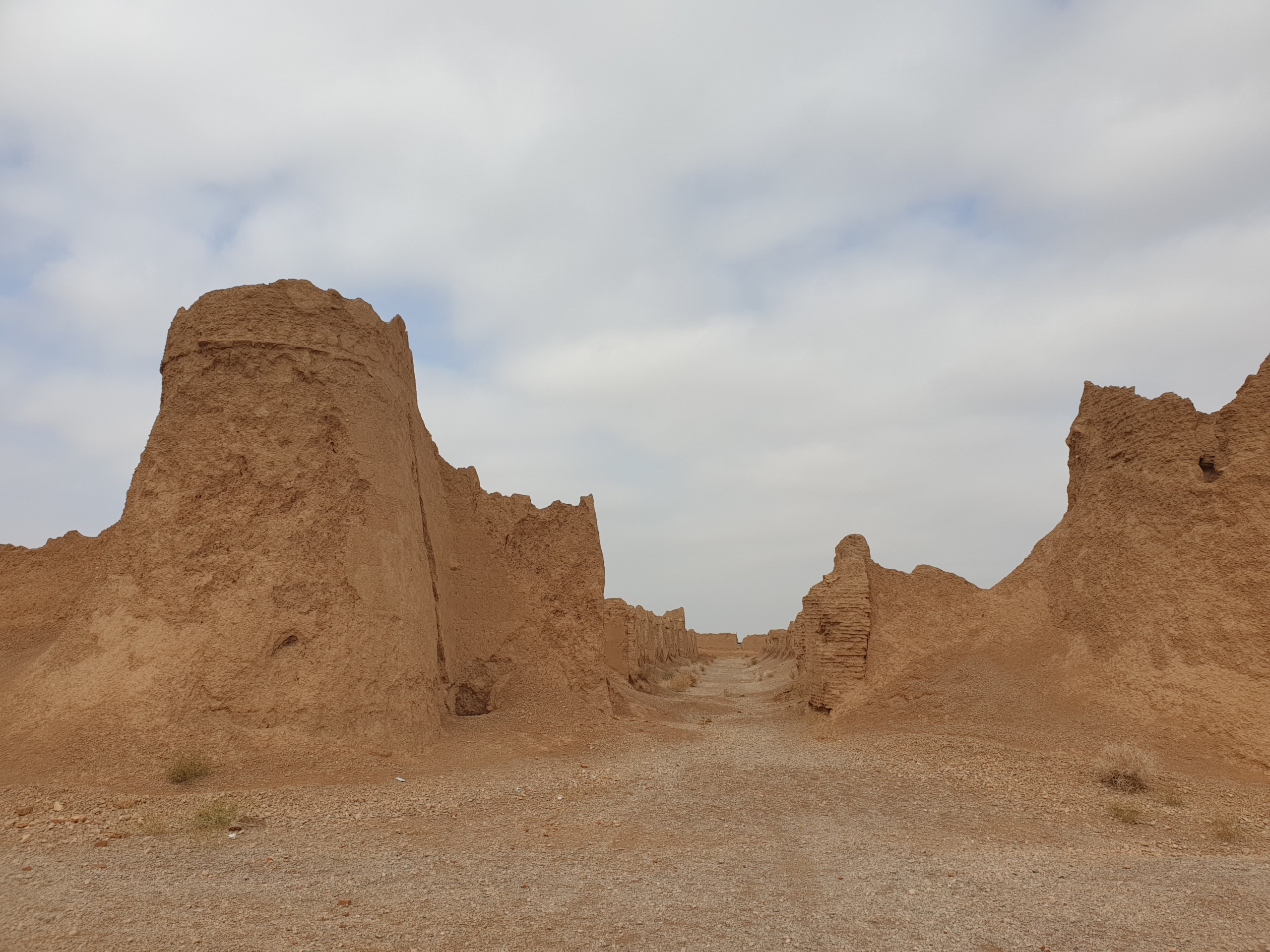Nasir Al-Mulk, An Unique Mosque
Nasir Al-Mulk Mosque or Pink Mosque is also known as Pink Mosque. It is located in Shiraz and was built during the Qajar dynasty by Nasir-Al Mulk. This mosque is one of the national World heritage sites of Iran and it annually attracts many travelers to Iran. It has visitors in the early morning, 9 AM- 11 AM. please read the article to understand why!
Nasir al-Mulk Mosque is one of the old mosques in Shiraz, it is famous for its colorful lights formed from behind its stained glass through the day and special beauty is created in the mosque space.
When you enter an old alley, in front of you, there is the beautiful and glittering mosque. It has two beautiful Muqarnas, a kind of artwork, in the small outer portal and the northern Iwan.
Historical Information
Nasir al-Mulk Mosque is one of the mosques in Shiraz which is located in the neighborhood of Lotfali Khan Zand Street. The mosque, which is one of the buildings of the Qajar era, was built from 1914 to 1926 by Hasan Ali Nasir al-Mulk.
The rise of the Safavid dynasty in Iran led to the creation of a government that had not seen itself in Iran after the Sassanid dynasty, which led the sectarian organization (Shia) and its related organization to dominate all aspects of Mariam’s life.
The rise of Shi’a intellectual life in this period, which is due to the gathering of Shiite thinkers and thinkers in the major centers of that time, especially Isfahan, and the exchange of their ideas and thoughts, brought about a new era in the field of Shi’a wisdom and philosophy and founded a manifestation of civilization in this country. And the government, according to previous traditions, deliberately organized, set up, and established infrastructure facilities and equipment the policies pursued by them can be inspired by the Sassanid policies.
What is clear is that the Safavid government was a summation of the multi-millennial history of Iran, which presented a school called Isfahani from the skillful summation of philosophy, art, architecture, and urbanization of the ancient gar day and introduced it to the society according to the examples and concepts of its day.
One of the most prominent manifestations of this period and its magnificent works, which still appears all over Iran, was a network of perpendicular roads, which had spread from the mountains into the deserts and salt marsh, and the construction of large robots and caravanserai and honorable stops, beautiful palaces, and palaces that he knew at the distances of the roads, in which all kinds of comfort and welfare of the people were provided.
Isfahani architectural methods have divided it into periods that the first period, which was during the Safavid dynasty, its flourishing period and the second period, which begins from the time of the rare rule and ends after Zandieh with the Qajar dynasty, which is considered as the period of the degeneration of Safavid architecture, which is the entry of European architecture in the Qajar era is one of the most important reasons for its degeneration.
Architecture at that time Afsharieh due to successive campaigns and lack of internal problems of the country, does not have significant works to present, and in the time of Zandieh, due to the government’s in Shiraz, most of its effects appeared in Shiraz, and in Qajar period, due to technical issues and lack of sufficient force to build in the past, slowly removed the country from the Iranian architectural process. However, the following points can be said about the characteristics and achievements of Isfahani architecture:
Simplifying the designs, which in most buildings, the spaces are four-sided
Simple geometry and shapes and broken lines were mostly used
At the bottom of the buildings, no less, but the construction of beveled corners began this time.
Piling and utilizing the same organs and sizes
The simplicity of the design in the buildings was also revealed
Reductions in the uses
Haft Rang Tile
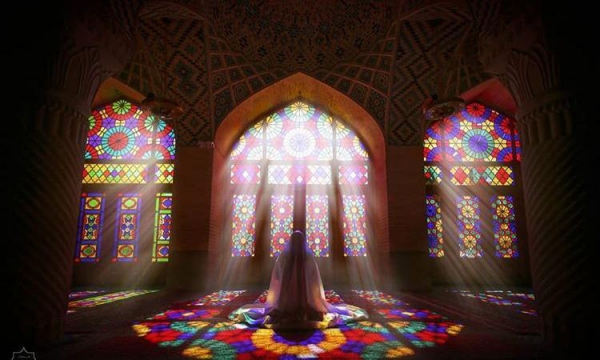
Nasir Al-Mulk Mosque
Architectural Information of Nasir al-Mulk Mosque
Nasir al-Mulk Mosque buildings include mosques, houses, bathrooms, water storage, etc. It is located in the old neighborhood in Shiraz. Much of the complex was demolished during street construction and new buildings were constructed. What is now left of Nasir al-Mulk’s house includes the main hall, part of the Androni courtyard, the exterior, and the basement. Haji Mirza, the third son of Haji Qavam al-Mulk, was one of the rulers of Fars during the Qajar era.
The mirror hall is constructed symmetry and on both sides of the two orsi (a type of old door that has a special frame and was opened and closed with up and down) a large nationwide knot with delicate knots and stained glass that is related to the two Andronis and outer courtyards. On the other two sides of the hall, there is a central king who opens to two adjacent rooms on both sides with orsi. The ceiling of each floor is slated and has European-style paintings.
Entrance of Nasir Al-Mulk Mosque
The entrance has a large vault, decorated with colorful seven-color tiles. The arch is made with Gandomak stone and its entrance arch has beautiful Mogharns of seven-color tiles. The entrance doors of the mosque are two large wooden doors, on top of which are written on marble, a poem by Shourida Shirazi on the occasion of the mosque’s builder and the year of its completion.
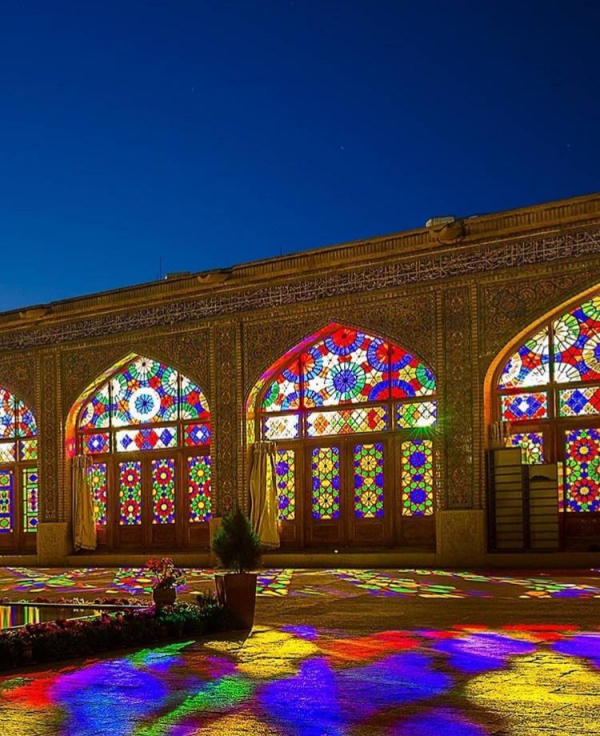
Nasir Al-Mulk Mosque – Dance of colors
Nasir Al-Mulk mosque: Eastern Hall
The western Hall, which has a brick cover and is mostly worked on and is more beautiful, is the arch of this nave on the stone pillars with a spiral design on it. These columns are located in two rows of six and twelve with the intention of twelve Imams. The nave also has seven doorways linking it to the courtyard of the mosque, with seven wooden doors with colorful glass. It is also used as a summer Hall.
This Hall has a tiled ceiling and has seven columns, with simple columns (without grooves) located in the middle, the roof is also decorated with Moqaali tiling ( a kind of Iranian art). In front of this hall is a 6-meter-wide porch that is separated from the courtyard by 8 arches and has 7 brick lines. Quranic verses and flower and plant roles are tiled on these jars and the forehead of the arches.
The decoration of this Hall is inspired by Vakil Mosque and Moshir Mosque in Shiraz and is made of integrated Gandomak stone. The arches and walls of this nave are decorated with beautiful tiles. The roof of this Hall is decorated with roles such as flowers and idols and Arabesque motifs, and a few verses of the Qur’an are decorated with excellent third lines.
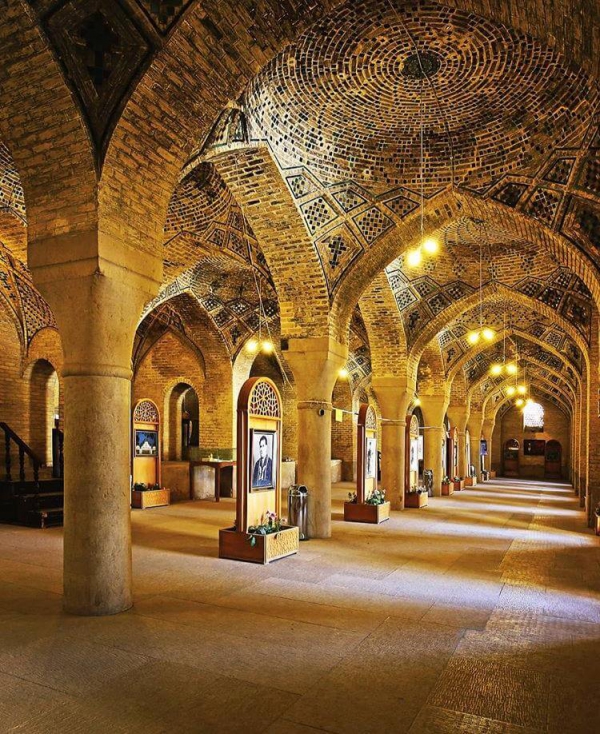
Nasir Al-Mulk Mosque – A great view
Nasir Al-Mulk mosque: Western Hall, The Main Hall
What makes Nasir al-Mulk Mosque famous among tourists is the scenes you see in this Hall. From the ceiling to the window and the pillars of the Western hall are spectacular. Tiling is eye-catching, and if you raise your head, the decoration and architecture of the ceiling will work to the point where the neck of the pain allows you to keep your head up and be overwhelmed to watch. The tiles are filled with the role of flowers and plants and verses written in the third line.
The hall floor is covered with colored carpets and when the light of the windows falls on the carpet, a celebration of color is held. Although some people think that if it weren’t for the carpet, the game of colors would have been more spectacular.
There are interesting points about the architecture and decoration of the Hall, such as its stone columns whose stones have been collected and carved from the mountains around Shiraz. Or the number of famous planets, seven, an allegory of seven heavens or seven in Paradise.
In the colored glass of the nave, you see four main colors, yellow, blue, green, and red. All of this glass is old and in their restoration, old glass from other houses has been used. In the tile image of Nasir al-Mulk Mosque, the role of the church can also be found, something that could only happen during the Qajar era.
moreover, the eastern bed-chamber has a tiled altar in pink colors and is also used in winter. also, it is accompanied by 12 columns and windows with colorful glasses. In addition, the floor covers with Persian carpets. Visiting Nasir-Al Mulk should be done in the early morning. When the sun’s lights pass from the colorful glasses, It makes an amazing scene on Persian carpets and walls. So, if you want unique photos, visit there early morning.
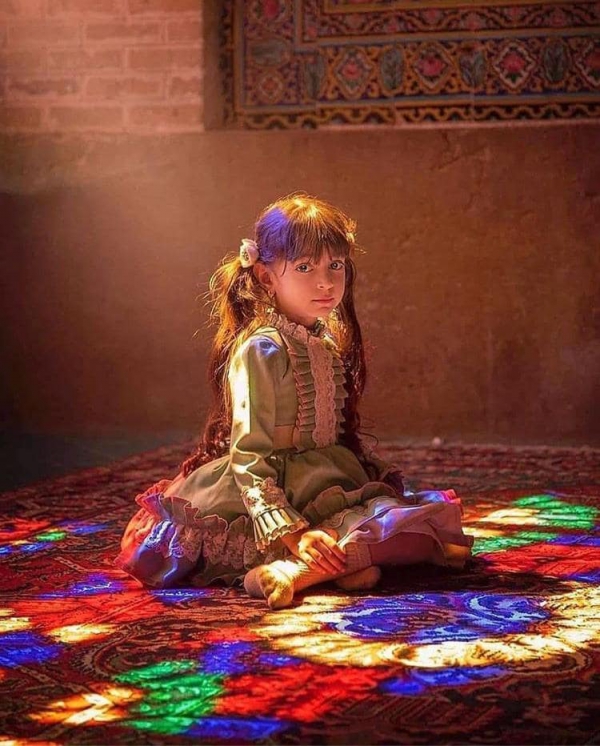
Mosque’s Eastern Hall
Above all, there is a museum in the opposite prayer hall. It opens into the Gav Cha (Cow Well), where cows used to raise water from the underground Qanat. The construction makes it flexible about earthquakes. Using flexible wood as struts within the walls, you can see it in Iwan’s wall easily.
also, rose-pink floral tiles are a signature feature of Shiraz, as Shiraz is a city of flowers.
Click and watch the following video to realize why Nasir Al-Mulk mosque is so impressive and breathless.
Hashtag Iran Tour Operator
Have you ever traveled to Iran? What about Shiraz? Did you visit Nasir al-Mulk Mosque?
#Iran is an online Iran Tour Operator which makes your travel to Iran easy. So, before traveling to Iran, visit our Iran Tour Packages. Please, contact us about any matter, Use our offers for traveling to Iran. we are always available!



